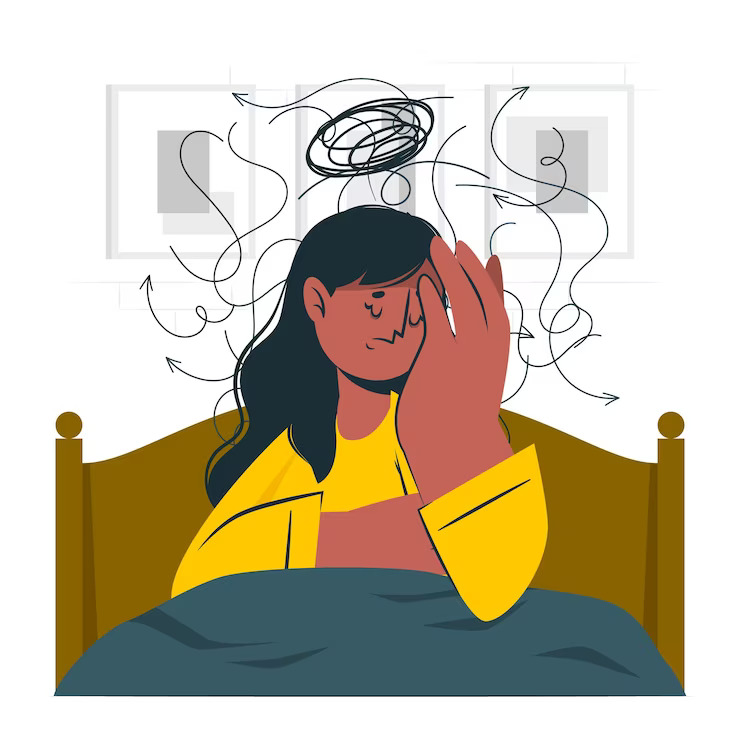
“There is nothing either good or bad but thinking makes it so.”
“The fault dear Brutus, is not in our stars, but in ourselves, that we are underlings.”
William Shakespeare
We have always been told that situations don’t define us, but what matters is our attitude towards the situation. So then, what is the difference between someone who is able to take a negative event in his/her stride and someone who gets dragged down even by supposedly minor events?
You’ll say “Ah! This one is easy! It depends on what we think!” Well, you are partially correct!
The answer to this lies in not just what we think but how we think. In our Cognitive Distortions.
What Are Cognitive Distortions?

Cognitive distortions are irrational thoughts or beliefs that tend to distort our view of ourselves, the world around us and the future, usually in a negative way. Not all of us have the same distortions and not all of us have the same number of them. We also may use them selectively and with varying frequencies in different areas of our life.
So then, is it really a thought problem or an attitude problem? Are people really choosing to think in this negative way? How about we look at this a little differently today? How about instead of looking at these distortions as evil and devilish, we look at them as our old- but- now- estranged- friends? Seems hard?
Imagine a time when there was a perceived threat to you, real or imagined. That threat brought about some very strong feelings with it. There must have been sadness, pain, guilt, anger and shame that threatened to overwhelm your system. To save yourself from this, thought took over. A rational thinking pattern was put in place as a protective force, to save you from uncertain and possibly uncontrollable emotions. Thought then, became your friend. Slowly though, what happened was that this thought pattern and/or a series of others emerged and started being used very frequently, and in nearly each situation. So frequently, that their protective function was left behind and the thoughts became increasingly irrational and dominant. They became well integrated and enmeshed in your thinking patterns. They became distortions, maladaptive and overwhelming in their own right!
Are they uncommon, then? No. In fact, cognitive distortions are very common and occur almost automatically – they don’t give us a choice! Our first response to an event or a situation becomes that! Then why can’t we identify them? That is because we don’t really know how to recognize them and how to look for them. These distortions then lead to feelings of sadness, guilt and shame or other so- called “negative” and not-fun emotions and tend to influence how we behave.

Begin Your Practice of Self Awareness and Well-Being
With Our Free E-book, 'First Few Steps To Mindfulness'
Knowing Myself Better : Identifying My Cognitive Distortions

Take a look at the following descriptions and try identifying your cognitive distortions. Also, try imagining how you would end up feeling and behaving as a result of those. Remember, identification is just the first step!
- All or None or Dichotomous Thinking
An individual with this thinking pattern usually looks at people/events/situations in absolute factors of either/or. So, something is rather good or bad, here or there, black or white. There is no middle ground. For example:
- “I failed in one paper. I am a total loser with nothing good in me.”
- “He did not talk to me today. I’m sure he is a terrible person”
- “Should” statements
An individual with this thinking pattern has a majority of thoughts involving “should”, “must” or “ought to”. For example
- “She should’ve called me first”
- “I must lose weight to look more attractive”
- Catastrophizing
An individual with this thinking pattern tends to assume the worst and sees anything negative as the worst, most terrible thing ever. For example:-
- “I missed one meeting, now they are going to fire me and I will never find another job”
- “This fight with my partner was terrible. I am sure we will break up and I will be alone, forever.”
- Magnifying
An individual with this thinking pattern tends to blow things out of proportion and exaggerate negative events. This is similar to the saying ‘making a mountain out of a molehill.’ For example:
- “I made a spelling error on my test today. I am sure the teacher will fail me because of it.”
- “She did not text me today morning. I am sure she is angry and upset with me”.
- Minimizing
An individual with this thinking pattern tends to minimize or give very little importance to positive events. For example:
- “Yes, I got a raise but it is not that big a deal and I’m still not good at my job.”
- “She complimented me today but I don’t think I am looking so good. Others look far better than I do.”
- Fortune Telling
An individual with this thinking pattern tends to act like a fortune teller with a crystal ball, predicting the future, usually in a negative way. This individual arbitrarily predicts that things will turn out poorly. For example
- “I just know that all the tickets will get sold out even before we reach”
- “I just know that the team will lose tomorrow and our efforts will be wasted”.
- Emotional Reasoning
An individual with this thinking pattern tends to believe that what he feels about the event or situation is the reality. So emotions about something are believed to be interpretation of the reality of the event. For example:
- “I’m feeling scared. This means there must be something dangerous here”.
- “I am feeling anxious about the exam. This means I am definitely going to fail.”
- Perfectionism
An individual with this thinking pattern tends to strive for perfection in everything and in all areas of his life. For example:
- “My work assignment must be perfect. I cannot tolerate any mistakes”.
- “I have to try to be the perfect partner. I cannot let him/ her down at all.”
- Externalization of Self-Worth
An individual with this thinking pattern tends to depend on external factors like other people or situations to feel good about himself/ herself. For example:-
- “The professor didn’t say anything about my answers. I am sure this means that I am not doing well in the subject and I don’t know anything at all”.
- “My partner did not hug me when he got home. I’m sure this means that I am not a good enough girlfriend”.
- Discounting the Positive
This is similar to Minimizing. Here, positive attributes, traits or situations are not given the seriousness or importance that they deserve and are trivialized. For example
- “I stood first in class today but that doesn’t matter since it was just by fluke. I am not that good at all.”
- “You are saying that I am kind, but that doesn’t matter. I have more flaws in me than good qualities.”
- Personalization
An individual with this thinking pattern tends to assume all the blame for negative occurrences in his/her life, sometimes even for those events that were beyond the individual’s control. The individual may also feel that whatever others are feeling or doing is a result of or a reaction to his/her actions. Frequent comparisons may also be made between the self and others. For example:-
- “It is because of me that my child did not behave. I must be a completely incompetent parent.”
- “The lady over the phone was rude to me. I’m sure I must have said something wrong to tick her off.”
- Mental Filter/ Filtering/ Selective Abstraction
An individual with this thinking pattern tends to selectively pay attention only to the negatives in an event, person or situation and dwells on those instead of considering the positives too and looking at the larger picture. This may also be seen where one detail or aspect of a situation is emphasized leaving the other aspects blurred and in the background. For example
- “So what if 8 out of 10 superiors gave me good ratings?! Two people still evaluated me negatively. This must mean I am incompetent.”
- “Although my professor said my essay was good, she still did mark a few lines as incorrect. I am sure this means that my essay was just terrible.”
- Mind Reading
An individual with this thinking pattern tends to believe that they know what others are thinking without them saying so and don’t consider other possibilities. For example:
- “I got late for the interview. I am sure the recruiters think that I am not worthy for this job.”
- “I dropped coffee all over my dress. I’m sure all the people around me must be thinking that I am so clumsy and useless
What Next?
Done identifying? What, you’ll ask, can I do about these then? Well, identification in itself is the goal half achieved. After that, you can try the following:
- Examine the Evidence:
Instead of assuming that the thought is entirely true, examine evidence for it. For example, if you feel that you have not achieved anything great this semester, try writing down all the areas in which you have actually scored/ done well and then see how big the evidence is for your belief.
- Self- Compassion:
If a friend or someone you look up to came to you with the same belief, how would you speak to them? We tend to hold double standards where we are extremely critical of ourselves and very kind towards others. Practise some kindness. Talk to and reason kindly with yourself as you would with someone you hold dear.
These two techniques are a good way to start with. Remember that it is important to work with the distortions and not so much against them. These thought processes are important but they need to go back to serving their protective function. They need to go back to being our friends again. In case the distortions and the associated feelings get overwhelming, you can always feel free to seek help from a mental health professional!
Another way to deal with thoughts and the mind as a whole is to practice mindfulness. What’s the big deal about mindfulness? Why should we be in the present? Read more about this here.
What has been your experience with your thoughts? How do you usually deal with them? Let us know here.

Want To Work On Your Cognitive Distortions?
Counseling can be a great tool to learn and work with your cognitive distortions and lead a happy, positive, stress-free life.
About the Author
This article was written by Team Inner Space. This post was consulted & approved by professional therapists practicing online therapy and counseling.
Ask a Therapist
If you are interested to know more about cognitive distortions and other mental health topics, ‘Ask A Therapist’ is a platform for you to ask your questions related to Mental Health, Mindfulness & Emotional Well-Being to our team of qualified Therapists.





hi